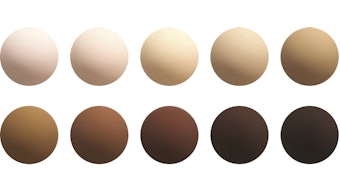Researchers at Ohio State University have invented a lens that enables microscopic objects to be viewed from nine angles at once to create a 3-D image. According to a report from the university, while previous 3-D microscopes use multiple lenses or cameras that move around an object, the new lens is the first single, stationary lens to create microscopic 3-D images.
Allen Yi, associate professor of integrated systems engineering at Ohio State, and postdoctoral researcher Lei Li, described the lens in a recent issue of the Journal of the Optical Society of America. According to the report, Yi referred to the lens as "a proof of concept for manufacturers of microelectronics and medical devices who currently use very complex machinery to view the tiny components that they assemble."
The prototype lens, which is reportedly about the size of a fingernail, looks similar to a gem cut for a ring, with a flat top surrounded by eight facets. However, this lens is not symmetric; the sizes and angles of the facets vary in minute ways. “No matter which direction you look at this lens, you see a different shape,” Yi explained. Such a lens is called a free-form lens and is a type of free-form optics, which according to the report has been in use for more than a decade but in this case was adapted for imaging microscopic objects.
“Using our lens is basically like putting several microscopes into one microscope,” said Li in a press statement. “For us, the most attractive part of this project is we will be able to see the real shape of micro-samples instead of just a two-dimensional projection.” One might envision this technology in the future to aid in the engineering, design and in vitro testing of advanced molecular components in cosmetics, such as polymers or delivery vehicles.
This research was sponsored by the National Science Foundation. Moore Nanotechnology Systems in Keene, NH, provided the ultraprecision milling machine.










